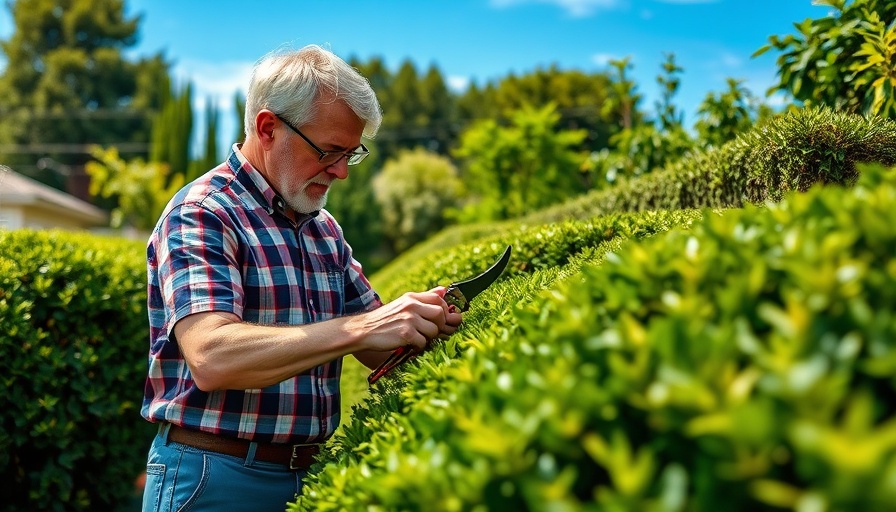
Transform Your Backyard into a Lush Paradise
Are you tired of staring at a backyard that resembles a jungle? Fret not, because with a little time and care, you can turn that overwhelming wilderness into a beautiful oasis right at home. This isn’t about overhauling your outdoor space but making simple, smart changes that will elevate its appeal dramatically. In fact, just the addition of well-cared-for hedges can give your home that million-dollar look!
In 'Making A House Look $1,000,000 With Hedges!', the discussion dives into transforming your garden into a stunning outdoor space, exploring key insights that sparked deeper analysis on our end.
Unlock the Secret to Luxurious Hedges
Hedges, particularly well-maintained ones, not only enhance your property’s curb appeal but also act as natural privacy screens and noise barriers. If you’re a plant lover, consider investing time in hedges like the lily pilly and the syzygium. Both types require different pruning techniques, but they're relatively easy to manage once you get the hang of it. Used judiciously, their lush growth will not only beautify your surroundings but also contribute to a healthier environment.
Pruning Techniques that Promote Healthy Growth
One of the best gardening secrets you can learn is how to properly prune hedges. Take your time and cut lightly; doing small cuts repeatedly can help you build confidence, avoid overwhelming the plants, and condition them for growth. Regular trimming encourages more vigorous regrowth and can help maintain an aesthetically pleasing shape.
Add Practical Features for a Welcoming Entrance
After taking care of your garden, consider the first impression your front entrance gives off. A simple, neutral paint job can make your hallway feel much more inviting. It’s a small task that can be done in under an hour and only takes a liter of paint! A hall table crafted from dressed pine can add function and charm while keeping your entryway organized.
The Joys of Succession Planting in Your Garden
You’re not just limited to hedges; think about how you can introduce sustainable gardening practices into your space, particularly through succession planting. Understanding that seed planting can be a simple, ongoing process helps in maximizing your yield throughout the growing season. You can leverage additional crops to increase variety while keeping your garden fresh and productive. Try planting lettuce and carrots in intervals, ensuring a continual harvest for several months.
Eco-Friendly Gardening: A Reward Beyond Aesthetic
We should also consider eco-friendly gardening solutions, such as utilizing organic fertilizers like hoflang dung. This blend of chicken coop waste and wood chips is not just effective; it promotes healthy soil and prevents the nitrogen depletion common with many traditional fertilizers.
Conclusion: Why Gardening Matters
In a world where urban living often means limited space, these small changes can transform not only your home but your quality of life. Whether it’s through creating a cozy welcome at your front door, cultivating lush hedges or establishing a rewarding garden, remember that the time spent in your garden is deeply fulfilling. Investing in nature and nurturing growth is a rewarding job, not only enriching your home’s value but enhancing your connection with the environment.
If you’re ready to turn your backyard into the garden of your dreams, we encourage you to take that leap into gardening this weekend. Embrace the process and enjoy the satisfying growth.
 Add Row
Add Row  Add
Add 




Write A Comment